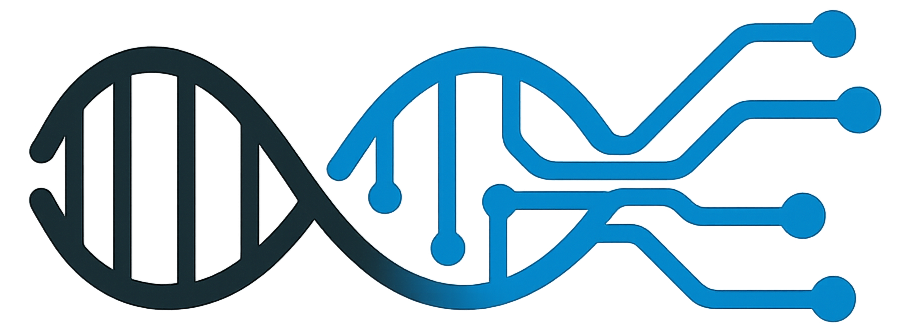🚲🚀From Bicycles to Brain Rockets: Steve Jobs, AI, and the Supercharged Mind
In the early days of personal computing, Steve Jobs gave us a metaphor that stuck like peanut butter to the roof of the tech world’s mouth: the computer, he said, is a “bicycle for the mind.”
Let’s rewind that for a second.
Jobs was referencing a Scientific American article that ranked species by locomotion efficiency—basically, how far a creature could go on a calorie. Condors came out on top. Humans were unimpressive. But then you put a human on a bicycle and boom—we blow everyone else out of the water. Suddenly, we’re the most efficient creatures on wheels.
That, Jobs argued, is what the computer does for our minds. It doesn’t replace thinking—it amplifies it. Like a bicycle, it extends our natural capability into something graceful, powerful, and a little bit thrilling. It's not automation, it's augmentation. Not outsourcing thought, but turbocharging it.
It was a perfect analogy for the computer age.
But then AI showed up.
And let’s just say, things escalated.
Beyond the Bicycle: A New Kind of Ride
If the computer was a bicycle for the mind, then artificial intelligence is less Schwinn, more SpaceX.
Because AI doesn’t just make the pedaling easier—it often pedals for you. Or builds a drone to carry your bike. Or questions why you were even trying to pedal in the first place.
Imagine sitting down to write an email. A computer gives you the tools to type and spell-check. AI? It drafts the email, summarizes the attachments, and throws in a catchy subject line while you sip coffee and consider your god-like efficiency.
We’ve left behind mere transportation. This is cognitive propulsion.
The Maglev Mind: From Effort to Glide
Think of the shift like this: computers were pedal-assist, but AI is maglev.
Old-school computing required attention, effort, and direction. But with AI, the thinking glides. Need to understand a dense article? Summarize it. Need to translate a document? One click. Want to design a marketing plan, write a limerick about your cat, or simulate an economic model? Done, done, and weirdly accurate.
Tasks that once took hours now take minutes. Minutes now take seconds. Seconds? Just a blink.
We're not riding anymore—we're floating.
Cognitive Rocket Boosters (Hold Onto Your Brain)
Of course, maglevs are smooth and fast—but they still stay on tracks.
What’s coming next might not.
Because the real story with AI isn’t just speed. It’s acceleration. Feedback loops. Systems that learn and grow, adjusting course mid-flight. We’re entering an era of cognitive rocket boosters, where AI tools not only amplify our minds but actively participate in the act of cognition itself.
We’re talking about systems that brainstorm with you, challenge your ideas, generate code, design interfaces, and even tutor you on quantum mechanics while telling jokes in the voice of your favorite actor.
If the computer gave us cognitive mobility, AI is flirting with cognitive autonomy.
But… Where Are We Going?
Which brings us to the slightly awkward question: if we’re no longer steering, who is?
Steve Jobs’ bicycle metaphor worked because it implied agency. The machine helped, but the human still pedaled, steered, and fell into ditches on their own terms.
But now, the tools are choosing routes for us. They’re completing our sentences, surfacing our news, and shaping our decisions based on patterns we don’t always understand. We’re outsourcing more and more of the journey, not just the effort.
And that’s both powerful and precarious.
We’re building tools that can guide thought, not just aid it. And if we’re not careful, we might end up as passengers on our own mental voyages.
From Tools to Teammates
This doesn’t mean we’re doomed to become couch potatoes with delusions of productivity. Used wisely, AI can be a thinking partner, not a thinking substitute.
Imagine a painter with a brush that anticipates every stroke. Or a scientist with a lab assistant who knows every study ever published. Or a writer with an editor that suggests better jokes and fixes the typos before they even appear.
These are not replacements for human thought—they’re multipliers.
But like any powerful tool, they require intention, restraint, and the occasional reality check.
What Comes After the Rocket?
Here’s the twist: even the rocket isn’t the end.
Because AI isn’t just transforming our thinking tools—it’s altering the nature of thought itself. As we integrate language models into more of our daily decisions, we begin a subtle shift toward cognitive outsourcing—offloading memory, judgment, creativity, even conversation.
That question mark at the end of our “cognitive transportation evolution” isn’t just rhetorical. It’s real. What comes next?
Neural interfaces?
Collective intelligence?
Minds that co-create with machines in seamless symbiosis?
Or maybe, terrifyingly, we just strap our consciousness into the passenger seat and hope the AI knows where it’s going.
The Future Needs More Pedaling (Metaphorically)
Here’s what Steve Jobs got right: the most powerful tools are the ones that make us better.
Bicycles don’t ride themselves. They just let us go faster, farther, with less exhaustion.
So as we bolt rocket engines to our mental frames and start building maglev tracks into every app, let’s remember: speed is great. Efficiency is thrilling. But agency is essential.
We don’t need to fear the future of thought. But we do need to stay involved in it.
Because no matter how fast your cognitive vehicle goes, it’s still your ride.

